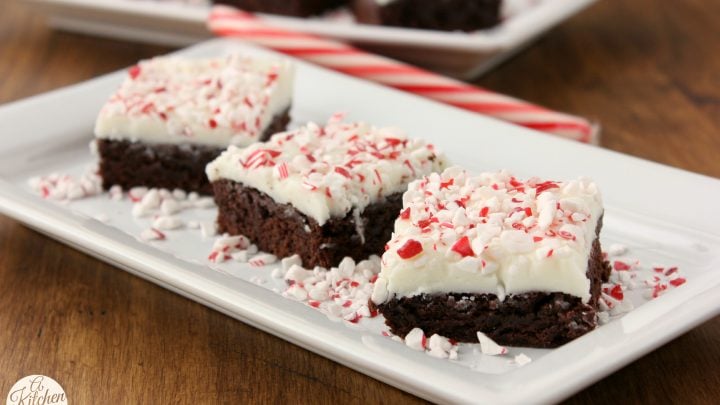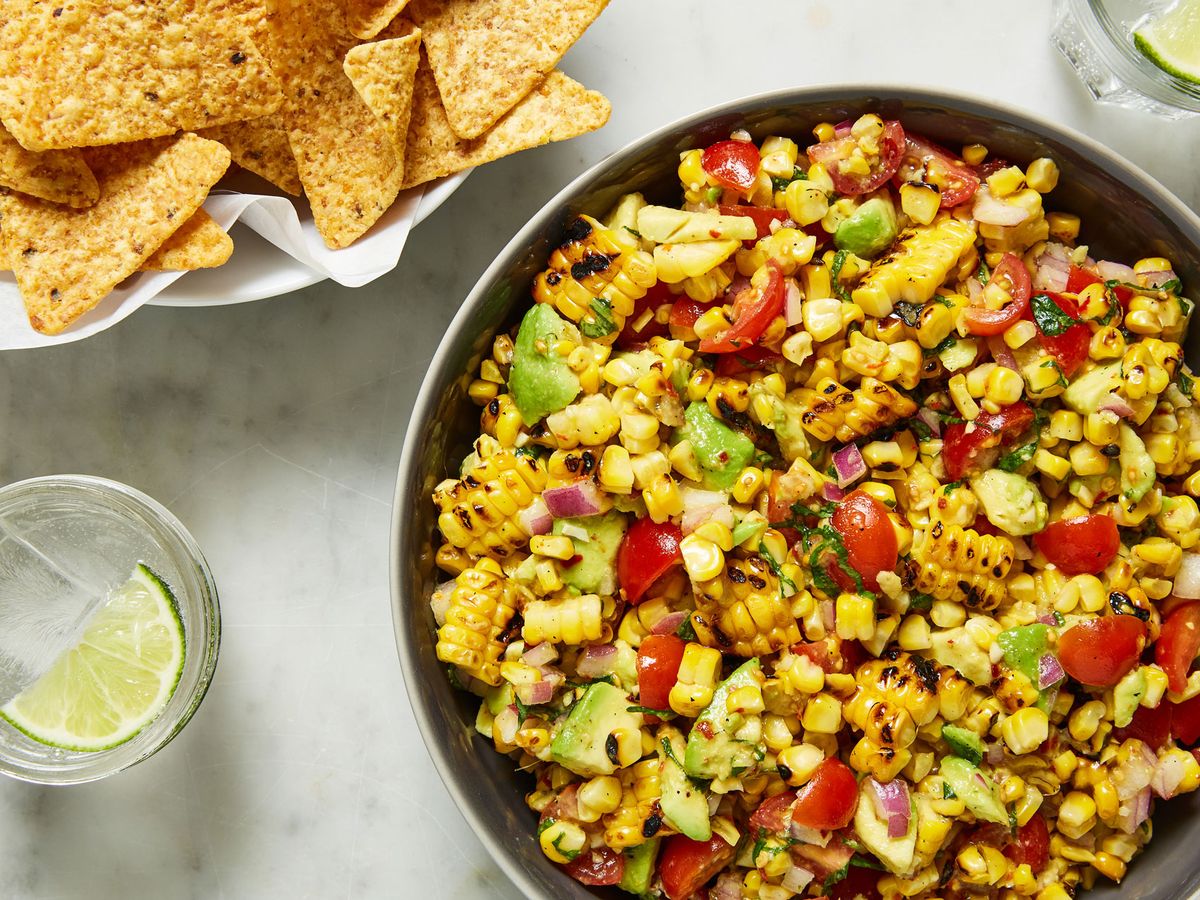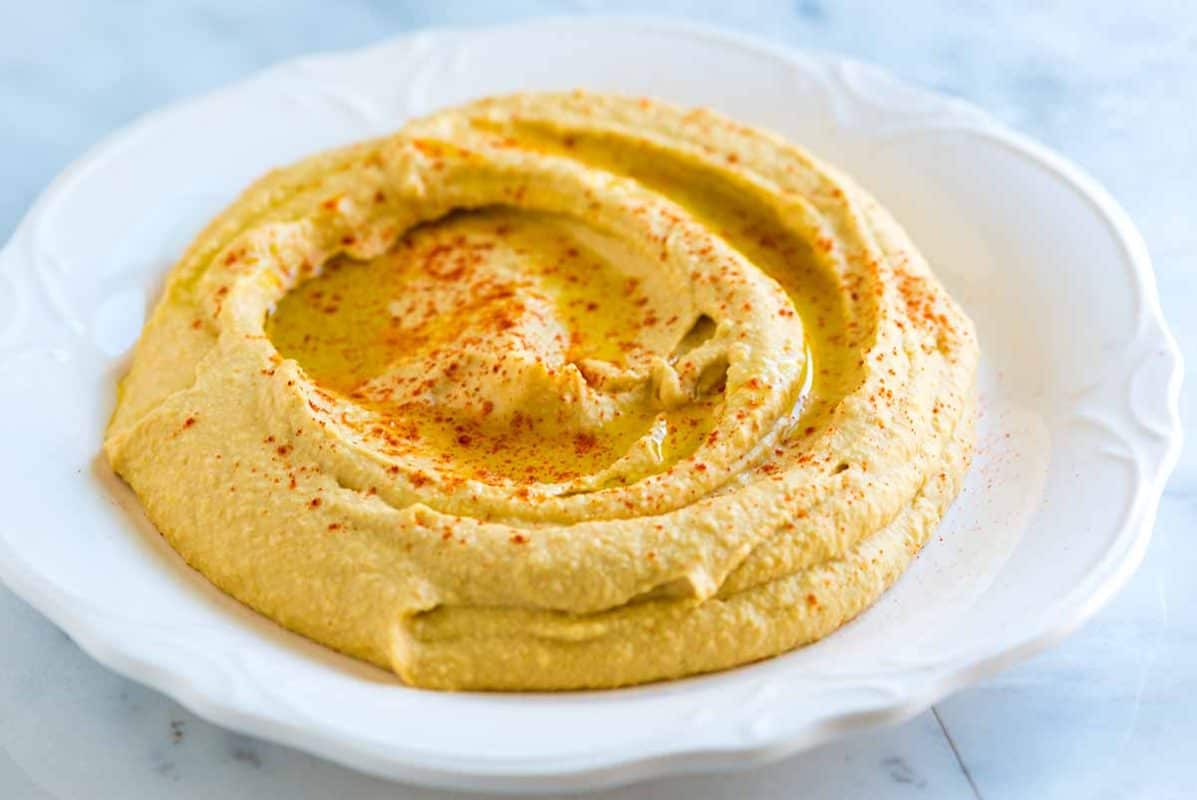
This Linty Hummus Recipe is the weightier way to create dreamy homemade hummus. Follow our DIY hummus recipe to go from a can of chickpeas to a luxuriously smooth hummus with the perfect wastefulness of lemon, garlic and sesame.
We love hummus virtually here. But like the song says, “There ain’t nothing like the real thing, baby.”
Hummus may be a perfect food. It can be a party side dish, an appetizer, or used as a seasoning to spread on your favorite sandwich or wrap. Plus, you can dip scrutinizingly anything into hummus! It’s unconfined on bread, veggies, meat or pita chips.
And it can contain a rainbow of variegated flavors, ingredients or seasonings. Squint no remoter than the Sabra hummus shelf or that multi-flavored hummus wheel found in most grocery stores to prove my point. No matter whether it’s spicy, savory, herby or sweet, hummus is awesome…
That is… unless it’s not.
Make the Weightier Hummus Recipe at Home
-
Store-bought hummus is notoriously hit-or-miss, so do me a favor: reserve your final judgment well-nigh hummus until you’ve gone to a restaurant with Middle Eastern cuisine and tasted a fresh, genuine version of this magical dip.
-
Once you’ve experienced the subtle flit of savor and texture that a real authentic hummus recipe can offer, it’s like seeing in verisimilitude for the first time. You’ll never go when to those unappetizing homogenized tubs of suntan paste again.
-
Our goal with this Linty Hummus Recipe is to bring that pure wits home into your kitchen so you can make your own hummus whenever you like.
-
And while I wouldn’t exactly undeniability this a quick and easy hummus recipe, it uses just a few simple ingredients and with a little time and effort, you can turn canned chickpeas into the weightier homemade hummus recipe you’ve overly tasted.

Ingredients for Our Linty Hummus Recipe
-
Canned Chickpeas – The foundational ingredient in hummus is chickpeas (also tabbed garbanzo beans). They requite hummus it’s color, texture, and subtle nutty flavor. Dried chickpeas usually have to be soaked overnight and then slowly sauteed. If you’re using dry chickpeas, follow this recipe. That all takes way too long for us, so we’re using canned chickpeas. (They’re increasingly widely misogynist in grocery stores anyways.) This is one shortcut that is totally unliable in this recipe.
-
Tahini paste – Pureed and fermented sesame seeds doesn’t sound like something we have time to master, so we’re going with store-bought trademark Soom tahini paste. If it’s good unbearable for Chef Michael Solomonov (his hummus wins awards), then it’s good unbearable for us. For nuanced pure flavor, this sesame paste is a key ingredient to up your hummus game.
-
Lemon juice – A squeeze of fresh lemon juice adds a unexceptionable citrus to this hummus and can hands be adjusted to your preference. We start with the juice of 1/2 lemon.
-
Garlic cloves – Use fresh garlic cloves that aren’t untried in the middle. They compliment the savory flavors in this hummus.
-
Olive oil – This ingredient can make or unravel your hummus. We have a lot to say well-nigh oils, but our unstipulated translating for this recipe is:
-
Firstly, don’t use old oil. While olive oil has a shelf life from 1-2 years, that’s in a sealed bottle. Once you unshut the seal, you want to use it within 2-4 weeks for weightier flavor.
-
Second, store your olive oil in an airtight container in a dark dry place. I know those tall well-spoken glass bottles with the flippy metal pour spouts and all the colorful herbs inside squint nice, but there’s a reason olive oil is bottled in sealed visionless untried glass or opaque corked jars. Sunlight, heat, and contamination from other strong smells/ingredients and humidity in the air rationalization olive oil to degrade, and sooner go rancid. If it smells bad, or tastes sour or bitter, get rid of it.
-
Third, taste test it first. Bolder oils will have a robust earthiness on your tongue, a “behind your teeth” acidity, or a peppery sharpness that you’ll either love or hate. Make sure the savor of your oil will go with the other ingredients of this linty hummus recipe by smelling them tropical together surpassing you start. The olive oil you segregate is a crucial component of this hummus since you’ll be drizzling it on top to serve and it will be the first thing that hits your taster, so pick an olive oil that you love. (If you have a local oil shop near you, go there and try samples. It’s fun, informative, and you’ll leave with some upper quality ingredients.)
-
-
Salt – Regular old table salt works fine for in the hummus (and is easier on your blender/food processor), but finger self-ruling to garnish yours with some larger fancier flakes or coarser sea salts for serving.
-
Fresh parsley and paprika – Mostly for a finishing touch of color, and subtracting just a hint of savor at the end.
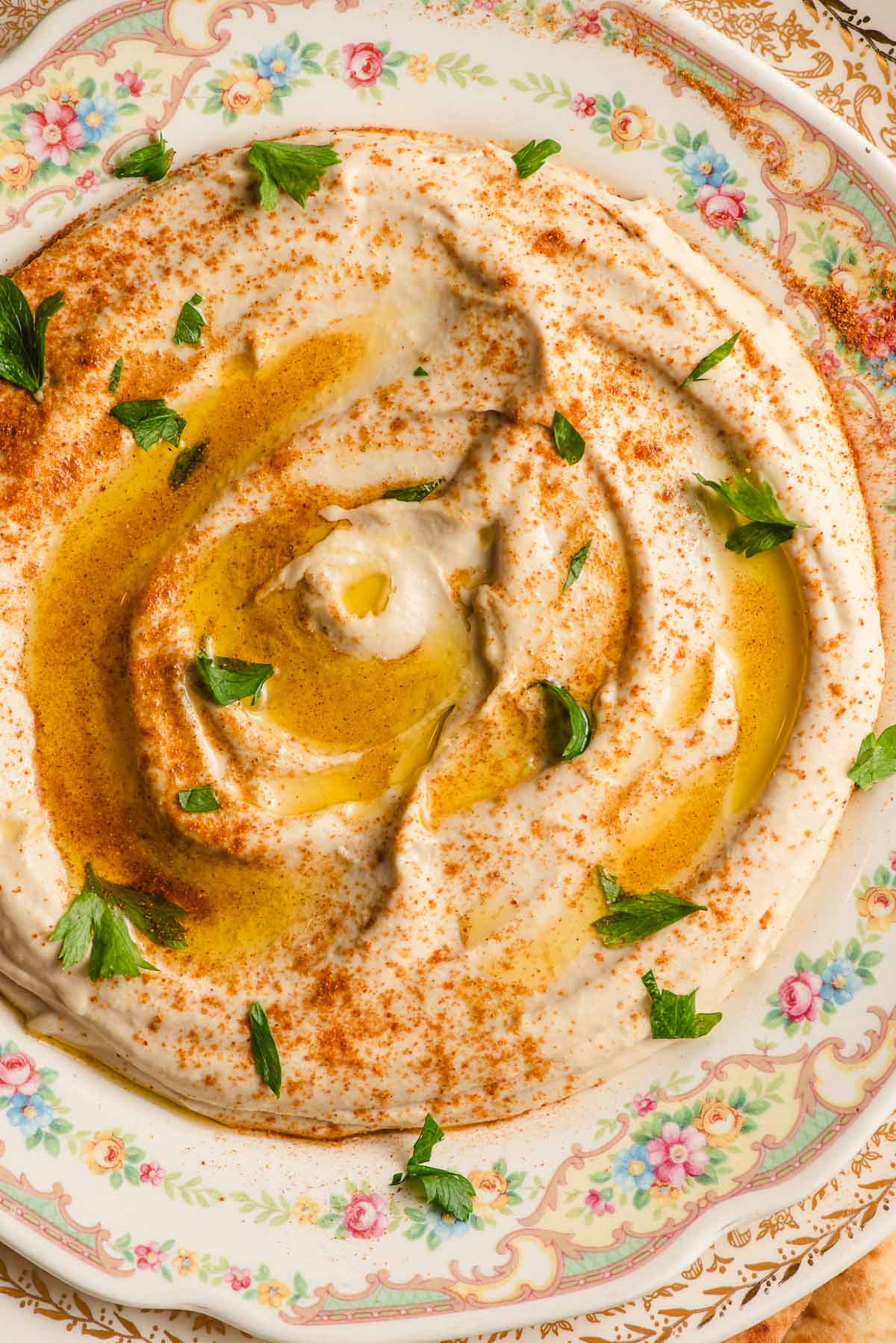
Tips for the BEST Linty Hummus
Homemade hummus is a labor of love and it pays to mind the details. To unzip the weightier results here’s some tips to follow:
Use upper quality ingredients.
You don’t need to printing your own olive oil, but other than the canned chickpeas and tahini, using fresh, quality ingredients makes a huge difference in this linty hummus recipe.
Use the right equipment.
-
Unless you have the top performing high-powered blender on the market, we’d recommend using a supplies processor to make this linty hummus recipe.
-
You might have no problem with a smoothie or an Orange Julius, but as shown in this blender review video, not all blenders have the motor power, stipule speed, and jar diamond to handle the difficult task of producing nut butters with a smooth texture.
-
So, to stave a hummus with a gritty texture (and possibly rabble-rousing your blender) make sure to use the right tool for the job.
Take your time.
Because this linty hummus recipe only has well-nigh 7-8 simple ingredients, make sure to take your time measuring properly, scraping the blender trencher lanugo commonly as you mix to ensure a uniformly smooth texture, and tasting samples as you go.
Also, I know you’ll hate me for recommending it, but Peel the Chickpea Skins.
How to Peel Chickpeas
Yes, it’s tedious, awkward, and time consuming, but trust me, IT WORKS, and it is worth it.
It took me well-nigh 20 minutes to remove the chickpea skins from the tuckered chickpeas.
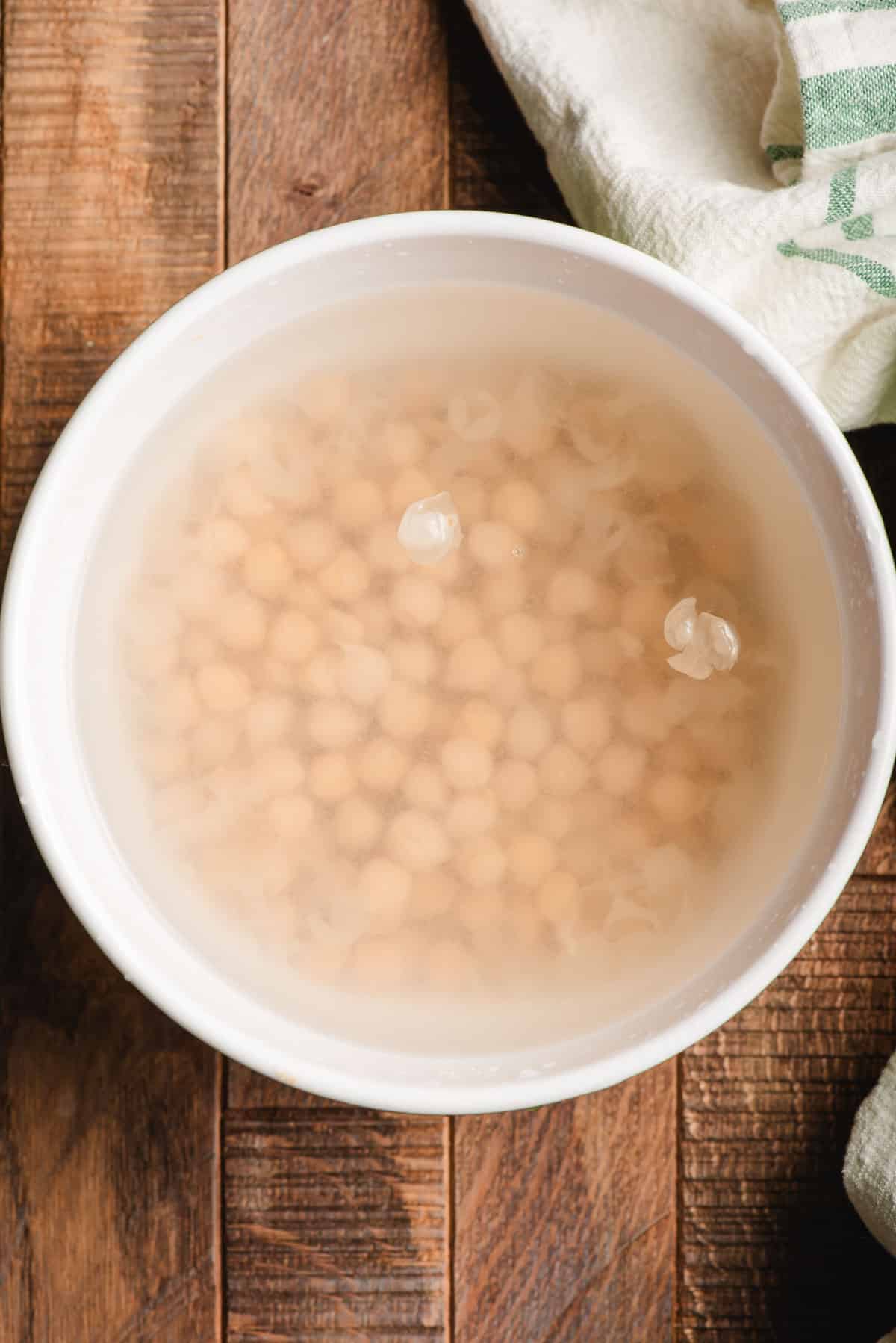
There are two methods you could use for skinning the beans.
-
Once you have rinsed and tuckered the canned chickpeas, pick up a stone and hold it between your thumb and pointer finger. Gently squeeze at one end until the skin slides off the bean. Repeat with the rest of the beans. Or…
-
Warm the beans in the microwave or in a skillet for 2-3 minutes. Place them in a large trencher and fill it with unprepossessed ice water. Rub the beans between your hands, and the skins will fall off and bladder to the surface. You may have to repeat this 2-3 times to get all of them.
No other single variable in this linty hummus recipe has such a profound effect on the final result than prepping your chickpeas (aka garbanzo beans) by removing the chickpea skins.
How to Make Linty Hummus
-
Peel your chickpeas. (See above) Be sure to save some of the water from the can.
-
Blitz the chickpeas in your supplies processor until they’re the consistency of sandy crumbles.
-
Add the tahini, lemon juice, garlic, and salt. Tousle and scrape the trencher frequently, slowly subtracting the canned chickpea water until the hummus is completely smooth.
-
Top with a drizzle of olive oil, parsley, salt and paprika to taste.
The result is a silky smooth hummus with that pure made from scratch smooth texture, and soft-hued well-turned savor that will run circles virtually the store-bought varieties.
Cover any leftover hummus with plastic wrap or seal in an snapped container and refrigerate for up to 5 days.
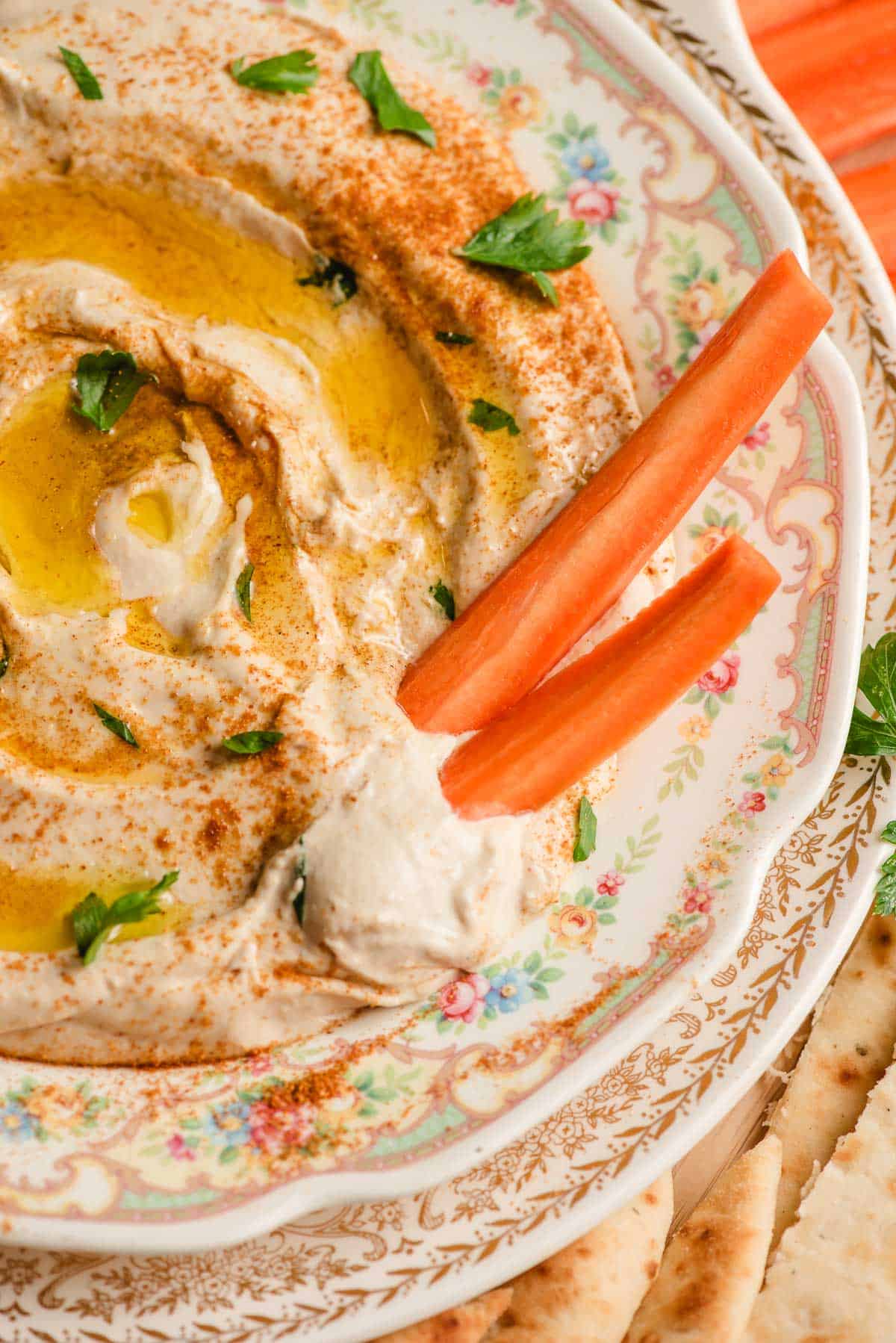
What to Serve with a Trencher of Hummus
Warm pita bread, fresh cut carrot sticks, melba toast, and cucumber coins are some of our favorites. But you can enjoy this healthy homemade hummus as the centerpiece of just well-nigh any pretzel assortment, cracker tray, charcuterie or vegetable platter.
If you want to hit an Eastern Mediterranean titbit trifecta, serve this linty hummus slantingly our Spicy Turkish Ezme Salad, our archetype Lebanese Tabbouleh or this fresh Israeli Salad. The colors and flavors go perfectly together!
We unchangingly have this linty homemade hummus with our Ground Beef Kafta Kebabs, and if you like it with savory spiced meats, it would go unconfined with our 30 minute Ground Beef Gyros, Gyro Bowls, or these Grilled Steak Kabobs as well.
Homemade Linty Hummus Recipe
Words cannot express how lovely, dreamy, and utterly divine this homemade hummus is. It is smooth and luxurious with the perfect wastefulness of lemon and garlic.
Ingredients
-
1 15 ounce can chickpeas
-
1/2 cup tahini paste
-
Juice of 1/2 a lemon
-
2 small cloves garlic, roughly chopped
-
3/4 teaspoon salt, or increasingly to taste
-
Reserved chickpea water from the can
-
Olive oil, parsley, paprika for serving
Instructions
-
Drain the chickpeas, reserving the juice in a small cup.
-
Remove the skins from the chickpeas. I find the easiest way to do this is to pinch the chickpeas between your thumb and forefinger, with the pointy side facing your hand. Squeeze the chickpea and the skin should pop right off. Place the skinned chickpea in the blender, and the skins in the trash.
-
Once all the chickpeas are skinned and in the blender (or supplies processor), pulse until the chickpeas are in sandy looking crumbles. You may need to stop and shake the blender and/or scrape lanugo the sides a few time.
-
Add the tahini, lemon juice, garlic, and salt, and tousle until smooth, scraping the trencher as needed.
-
Slowly add the chickpea water to the mix until the mixture can tousle without transmissible and is completely smooth. I usually use nearly all of the reserved water.
-
I like to nippy the hummus for an hour or so. To serve, top with olive oil, parsley, and sprinkle with paprika.
Nutrition Information:
Yield: 8 Serving Size: 1
Amount Per Serving: Calories: 231Total Fat: 12gSaturated Fat: 2gTrans Fat: 0gUnsaturated Fat: 9gCholesterol: 0mgSodium: 356mgCarbohydrates: 26gFiber: 6gSugar: 7gProtein: 8g


:max_bytes(150000):strip_icc()/270469-Easy-Meatball-Casserole-4x3-1-c90681e1fbe04bdc97d7242c4cd78dde.jpg)
